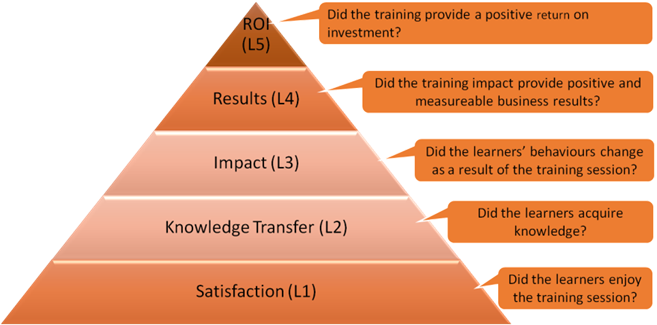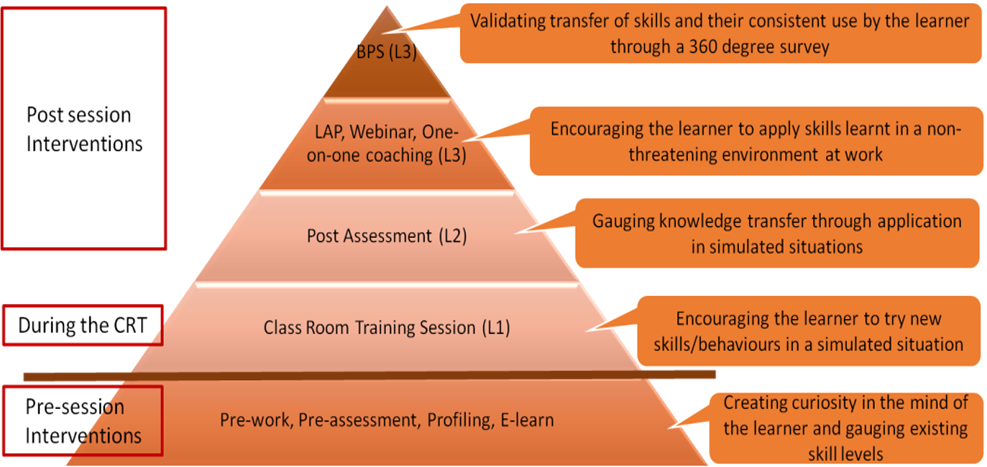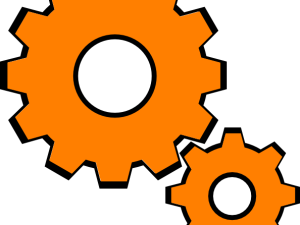
Impacting Behaviours through Multi Stimuli Model (MSM)
Is Training a prayer or a science? A tick in the box, a mandated number of days/hours to be clocked; or is it a potent business tool to achieve a specific change or business outcome for the learner & the organization? Most of us in the Training space would like to believe that it is the latter – that it is a science that enables achievement of a specific, measurable, desired business outcome. Evidence, however, points to the contrary.
Training in many quarters, is still seen as an item of “cost” rather than an investment – many a times, one of the first costs to be axed altogether, should the organization find itself in troubled waters. Paradoxical, wouldn’t you say – a tool that is meant to be used to avert and help businesses out of troubled waters, is abandoned at the first sighting of trouble? So, what prevents managers and organizations from viewing training as a potent tool to bring about desired change in outcomes? Here’s our perspective….
Most learning interventions use the Kirkpatrick Model to evaluate its effectiveness. However, very few use it for the purpose that its creator Donald Kirkpatrick, originally conceptualized it for – to provide a framework for design of learning  interventions. Mentor Learning, prides itself to be among the very few Learning Services Company that use the Kirkpatrick Model to design as well as measure learning interventions. It makes good sense to us, to begin with the end in mind. If training programs are to be viewed as instrumental in business success, then we should design programs by deriving the target behaviours required from desired target results (both present and future), and not merely from current problems.
interventions. Mentor Learning, prides itself to be among the very few Learning Services Company that use the Kirkpatrick Model to design as well as measure learning interventions. It makes good sense to us, to begin with the end in mind. If training programs are to be viewed as instrumental in business success, then we should design programs by deriving the target behaviours required from desired target results (both present and future), and not merely from current problems.
The second hurdle appears to be that most training programs are designed to deliver only Kirkpatrick Level-1 scores – entertaining the audience; or at best effecting an increase in knowledge levels of the target audience (Kirkpatrick Level-2). While change in knowledge levels is a pre-cursor to change in behaviours; training interventions fail when they are founded on the assumption that change in knowledge will automatically result in change in behaviours.
Employees are not machines. Therefore, new habit formation takes more than just a convincing logic. Let’s look at the brain science behind effective ‘learning engineering’. While cortex is the logical part of our brain, how we behave or react to a situation is controlled by the emotional part of our limbic system – the Amygdala. The Amygdala is wired to allow only those behaviours that it has ‘grown’ to be comfortable with. Thus, any new behaviour is met with resistance by the Amygdala, even if the cortex is convinced that the new behaviour is safe or more productive.
Traditional single stimuli (classroom/e-learn only) training programs that aim to influence the cortex by providing convincing knowledge/logic, end up only entertaining the audience’s intellect at best. For the learning to translate into changed behaviours, the Amygdala needs to be convinced to consistently use the new behaviours in appropriate situations. This is unlikely to happen in a single stimuli model. At Mentor Learning, we have developed our own Multi-Stimuli-Model (MSM) to overcome this challenge in human transformation.
Every Mentor learning intervention is MSM compliant and is built to appeal to the Amygdala. Under the MSM model, a learner typically stays with us over a 6 to 8-week period and is subjected to multiple learning stimuli before, during & after the classroom training sessions. The multiple triggers are designed to induce trial of skills/new-behaviours in a non-threatening environment with a view to convince the Amygdala of the learner that the new behaviours are safe and more fruitful; thus, resulting in translation of learning into desired behaviours, which in-turn produce the desired results. Here is the brief overview of the MSM learning process:
All Mentor programs begin with a Pre-work which aims at initiating a sense of curiosity and anticipation of what is to follow. Like a farmer who prepares the ground to receive the seed, the Pre-work prepares the mind of the learner to be receptive to the skills/behaviours that will be shared in the class room, by establishing the need for the program.
Next comes the first self-assessment by the learner – a Pre-Assessment. This helps the learner gauge his existing belief and skill levels for the identified skills/behaviours. It is important to measure a learner’s belief and plan to impact these through the program as behaviours can only be manifested by instilling necessary Supporting Beliefs in the learner.
The Class Room Training (CRT), which is the next stimulus in the MSM, is briefly about knowledge dissemination and mostly about trial of skills through cases studies, games, activities & roles plays, based on simulated situations. The Learning Design ensures that all skill models discussed in the class-room are last mile ready.
The CRT is followed by a Post-Assessment to check for understanding of application. Both assessments, Pre and Post, are scenario based and at Blooms Level-3. Each scenario captures a work place related situation with four possible learner reactions/behaviours to choose from. In the Post-Assessment, the learner is required to choose his response by consciously applying the skills/behaviours imparted during the CRT. Both assessments are graded objectively to measure the extent of cognitive change effected by the program.
Unlike most interventions that end at the Classroom, Mentor’s learning design provides for a spill-over of skill trial at the learner’s workplace through a Learning Application Project (LAP). The LAP is typically deployed about 5 to 7 days after the CRT, just when the novelty of the CRT begins to wear off. It comprises of activities which induce trial of relevant skills/behaviours in real-life scenarios, thereby ensuring that these newly acquired skills don’t fade-away with passage of time. The LAP provides the learner an opportunity to try out his new skills/behaviours in a non-threatening environment with the support of his manager who is briefed for this activity.
Post the LAP, Mentor offers continued support through webinars and one-on-one coaching sessions based on organization specific requirements. Learners are encouraged to share any challenges that they face while trying out the newly acquired skills/behaviours with internal and external stakeholders. Finally, a Behaviour Perception Survey (BPS) is administered to the learner’s peers, managers/clients and direct reports to gauge real-time, the intensity of transfer of designated skills/behaviours in the learner.

The entire journey, beginning with the Pre-work and ending with the BPS requires commitment and investment of time and effort from the learner, his manager and often the entire organization. There are no shortcuts for those who wish to make a difference. The process of human transformation through skill building, begins with “not knowing what we don’t know” (unconscious incompetence), then discovering “what we don’t know” (conscious incompetence), inducing us to “consciously practice what we now know” (conscious competence), and culminating in “unconsciously using what we now know” (unconscious competence), with consistency and ease – a truly empowering and liberating experience.
Happy Learning!





